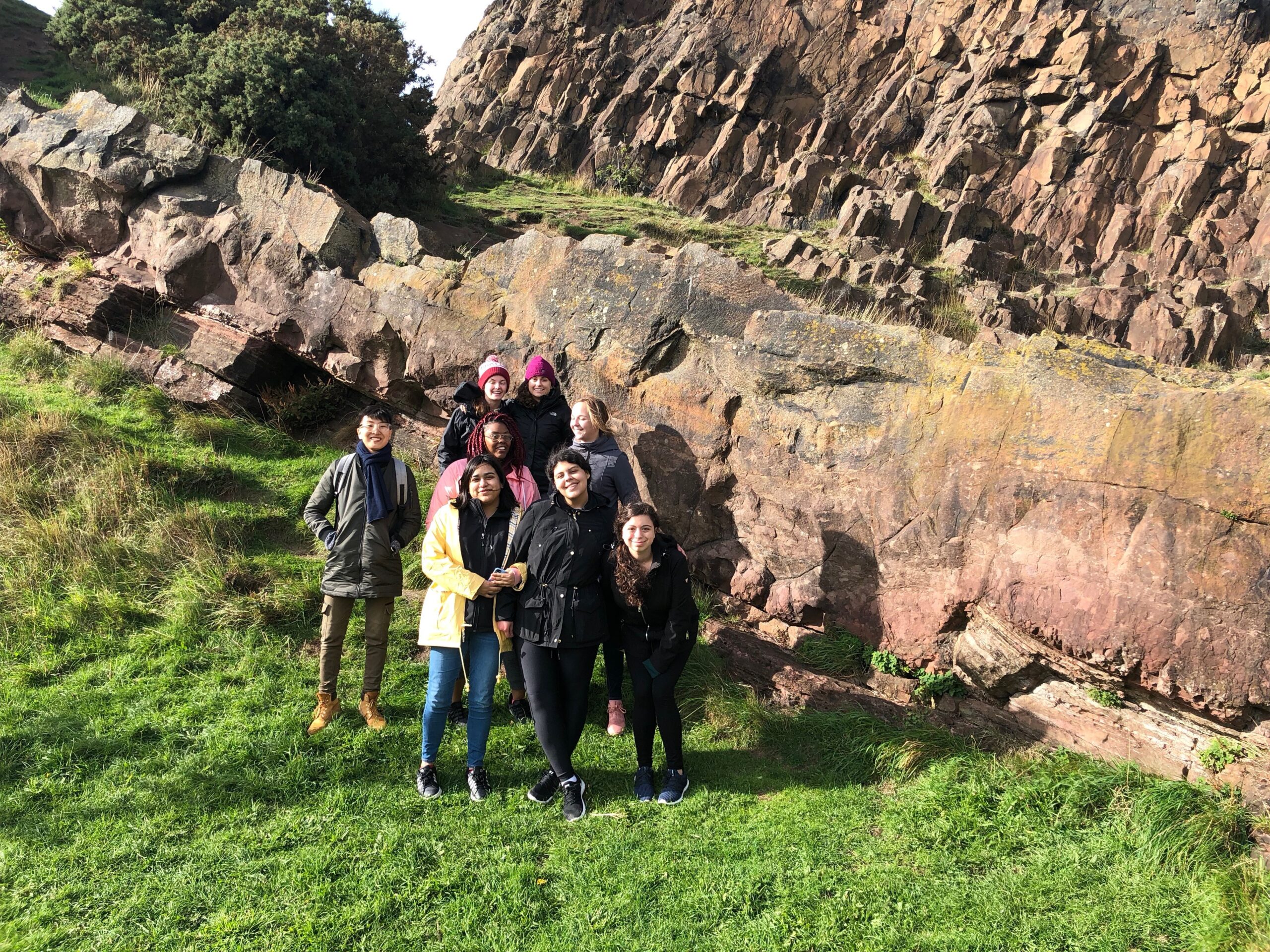Field Study Across the Disciplines
Reflections from Lafayette College faculty on field study outside the classroom.
“Not all classrooms have four walls.”

Geology students studying earth history in Edinburgh, Scotland.
“Field study” includes so much, and can take many forms as a component of a course or an entire curriculum. Many of us incorporate “field trips” in to our courses. Some of these experiences are observational or inspirational, others are done for gathering samples, and still others are to witness or document processes. These are learning experiences “out in the world”, beyond the traditional higher education settings of classrooms and laboratories.
Nearly every course, no matter the discipline, can include field study. We may leave our classroom setting to visit something static such a unique landscape, an object in a museum, or a structure in the built environment. Or perhaps we may want to witness and understand something dynamic such as the variance of a natural or human system, the inter-workings of a community, or the practice of an art form. Field study can positively impact student learning of material and skills in our disciplines and can be thought of broadly from the natural sciences and engineering, to the social sciences and humanities.
The short-term field study we are all used to from our formative years is the classic “field trip”. What comes to mind is a few hour-long visit to some place. It is important to consider too that field study can take many other forms. Perhaps the field study is a set of repeated visits to the same place, spaced apart in time. Perhaps it is a longer term, multi-day (or multi-week) excursion. Maybe individual field studies integrate with each other somehow within a course or curriculum progression. Or perhaps something else still different. Just what form field studies can take can go well outside of the box model of a single afternoon on a yellow school bus.
View a recording of a faculty panel discussion in Fall of 2020 with perspectives of what field study is and what it can be across a few departments at Lafayette College.
And here, in the Lafayette College Assignment Repository, are examples of activities and assignments our colleagues have used in their teaching that take place in a field setting.
Below is a sampling of published studies from across divisions that further show the diverse ways in which field study has been incorporated into a variety of college courses. How might a field study be built into yours?
Natural Sciences
- Klippel, A. et al. (2019) Transforming Earth Science Education Through Immersive Experiences: Delivering on a Long Held Promise. Journal of Educational Computing Research. 57(7): 1745-1771.
- Lei, S.A. (2010) Field Trips in College Biology and Ecology Courses: Revisiting Benefits and Drawbacks. Journal of Instructional Psychology, 37(1), 42-48.
Social Sciences
- Das, S. (2015) Using Museum Exhibits: An Innovation in Experiential Learning. College Teaching, 63(2), 72-82.
- Onyeiwu, S., Nguyen, H. (2018) Incorporating Field Trips Into the Teaching of Business and Economics: Method and Evaluation. Journal for Economic Educators, 18(2), 60-80.
- Scarce, R. (1997) Field Trips as Short-Term Experiential Education. Teaching Sociology, 25(3), 219-226.
Humanities
- Batic, J. (2011) The Field Trip as Part of Spatial (Architectural) Design Art Classes. CEPS Journal, 1(2), 73-86.
Engineering
- Ghail, R.C., Standing, J.R. (2019) Development of an Engineering Geology Field Trip for Civil Engineering Students. Quarterly Journal of Engineering Geology and Hydrogeology, 53, 74-87.
CBLR
- Dardig, J. (2004) Urban connections: A Course Linking College Students to the Community. College Teaching, 52(1), 25-30.